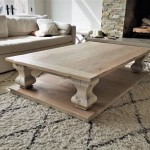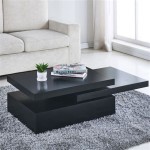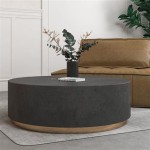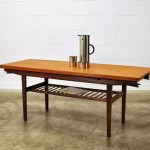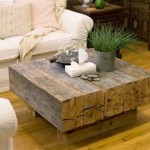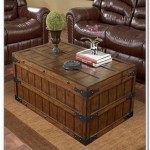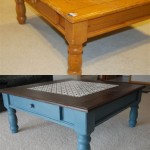What Causes A Glass Patio Table To Shatter On Its Own
The seemingly spontaneous shattering of a glass patio table is a perplexing and often alarming event. These tables, designed for outdoor use, are generally constructed from tempered glass, which is significantly stronger than standard glass. Despite their inherent durability, these tables can, under certain conditions, shatter without any apparent external force. This phenomenon is not random; rather, it is the result of a confluence of factors that compromise the structural integrity of the glass. Understanding these factors is crucial for preventing such incidents and maintaining a safe outdoor environment.
The primary reason for glass patio table disintegration can be attributed to inherent stresses within the glass itself. Tempered glass production involves a heating and rapid cooling process that creates a hard, compressive outer layer. This compressive stress on the surface is balanced by tensile stress within the core of the glass. This balance gives tempered glass its strength. However, imperfections or damage, even microscopic ones, can disrupt this balance and create points of vulnerability.
These imperfections, often referred to as inclusions, can be introduced during the manufacturing process. While quality control measures are in place to minimize these defects, they are not always completely eradicated. Over time, these minor flaws can weaken the glass, increasing its susceptibility to shattering, especially when environmental factors come into play.
Nickel Sulfide Inclusions
One of the most common culprits behind spontaneous glass breakage is nickel sulfide (NiS) inclusions. These tiny particles, if present within the glass matrix, can undergo a phase change, meaning they change their crystalline structure or volume, over time. This phase change is temperature-dependent; as the temperature fluctuates, the nickel sulfide particles expand and contract. This expansion creates internal stresses within the glass around the inclusion. While the stresses might be minimal initially, over months or years, repeated temperature cycles can cause these stresses to accumulate, eventually exceeding the glass's tensile strength and leading to catastrophic failure.
The presence of nickel sulfide inclusions is notoriously difficult to detect during manufacturing. They are often microscopic in size, and the existing testing methods are not always foolproof. Heat soaking, a process where the glass is held at an elevated temperature for an extended period, is sometimes used to induce breakage in glass containing NiS inclusions before it is installed. However, this process is not always performed, and even when it is, it does not guarantee the elimination of all problematic inclusions.
The location of the NiS inclusion within the glass also plays a crucial role. Inclusions located near the center of the glass thickness are more likely to cause breakage than those located near the surface. This is because the tensile stress is concentrated in the core of the tempered glass.
Edge Damage and Micro-Fractures
While the primary cause may be internal stresses, external factors also significantly contribute to the likelihood of a glass patio table shattering. The edges of the glass are particularly vulnerable to damage. Even minor chips or scratches along the edge can create stress concentrations. These areas act as initiation points for cracks to propagate through the glass.
The handling and installation of the glass tabletop are critical. Rough handling during transportation or placement can easily cause edge damage. Similarly, improper support or uneven placement on the table frame can create stresses that exacerbate existing micro-fractures. The use of hard objects around the glass, such as metal tools or abrasive cleaners, can also lead to undetectable surface damage that weakens the glass over time.
Exposure to harsh weather conditions, particularly freeze-thaw cycles, can also contribute to edge damage. Water can seep into tiny cracks and crevices. When the water freezes, it expands, widening the cracks and further weakening the glass. Over time, this process can compromise the structural integrity of the table, increasing the risk of spontaneous shattering.
Furthermore, the table's design can exacerbate the risk of edge damage. Tables with sharp, exposed edges are more susceptible to damage than those with rounded or beveled edges. The frame design and the method of securing the glass to the frame can also play a role. A poorly designed frame that does not provide adequate support can place undue stress on the edges of the glass.
Thermal Stress and Environmental Factors
Temperature fluctuations, even without freeze-thaw cycles, can induce thermal stress in glass patio tables. Glass expands when heated and contracts when cooled. If different parts of the glass are subjected to different temperatures, this can create significant stress within the material. For example, if part of the glass table is in direct sunlight while another part is shaded, the temperature difference can cause internal stresses to build up.
The type of glass used in the table also affects its susceptibility to thermal stress. Some types of tempered glass are more resistant to temperature changes than others. The thickness of the glass also plays a role; thicker glass is generally more resistant to breakage than thinner glass, but it is also more susceptible to thermal stress if temperature differentials are significant.
Prolonged exposure to direct sunlight can also weaken the glass over time. Ultraviolet (UV) radiation can degrade the surface of the glass, making it more brittle and susceptible to cracking. While some glass is treated with UV-resistant coatings, these coatings are not always entirely effective in preventing long-term degradation. Additionally, the color of the glass can influence its susceptibility to thermal stress. Darker colored glass absorbs more heat than lighter colored glass, increasing the risk of thermal stress-induced breakage.
The table's location and orientation can also affect its exposure to environmental factors. Tables placed in exposed areas are more susceptible to wind, rain, and temperature fluctuations than those placed in sheltered areas. Similarly, tables oriented in a way that exposes them to direct sunlight for extended periods are at greater risk of thermal stress-related damage.
In summary, the shattering of a glass patio table is rarely a single-cause event. It is typically the culmination of internal stresses, external damage, and environmental factors. Understanding these factors can help in taking preventative measures, such as carefully inspecting the glass for damage, providing adequate support for the tabletop, and protecting the table from harsh weather conditions. While spontaneous breakage cannot always be prevented, minimizing these risk factors can significantly reduce the likelihood of such incidents.

Glass Table Tops Can Suddenly Explode For No Specific Reason

Shattered Glass Table Top Outdoor Replacement

Glass Tables Are Exploding Here S Why

Glass Tables Are Exploding Here S Why

Glass Tables Are Exploding Here S Why

Causes Of Spontaneous Glass Breakage And How To Prevent It Sieger Architektur Systems

Glass Tables Are Exploding Here S Why

What Causes Glass To Shatter By Itself

Why We Re Not Worried About Pyrex Bakeware Exploding Wirecutter

Causes Of Spontaneous Glass Breakage And How To Prevent It Sieger Architektur Systems
Related Posts

